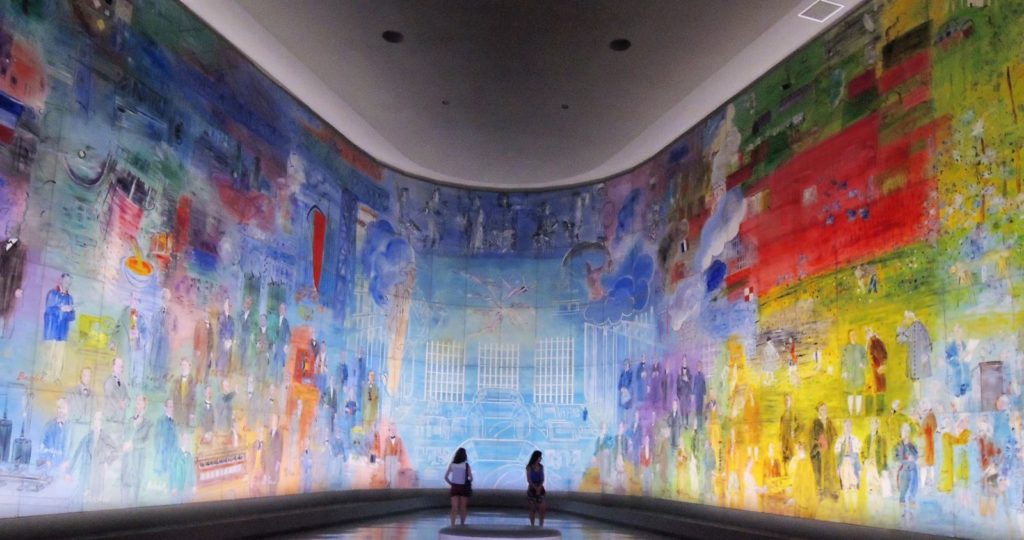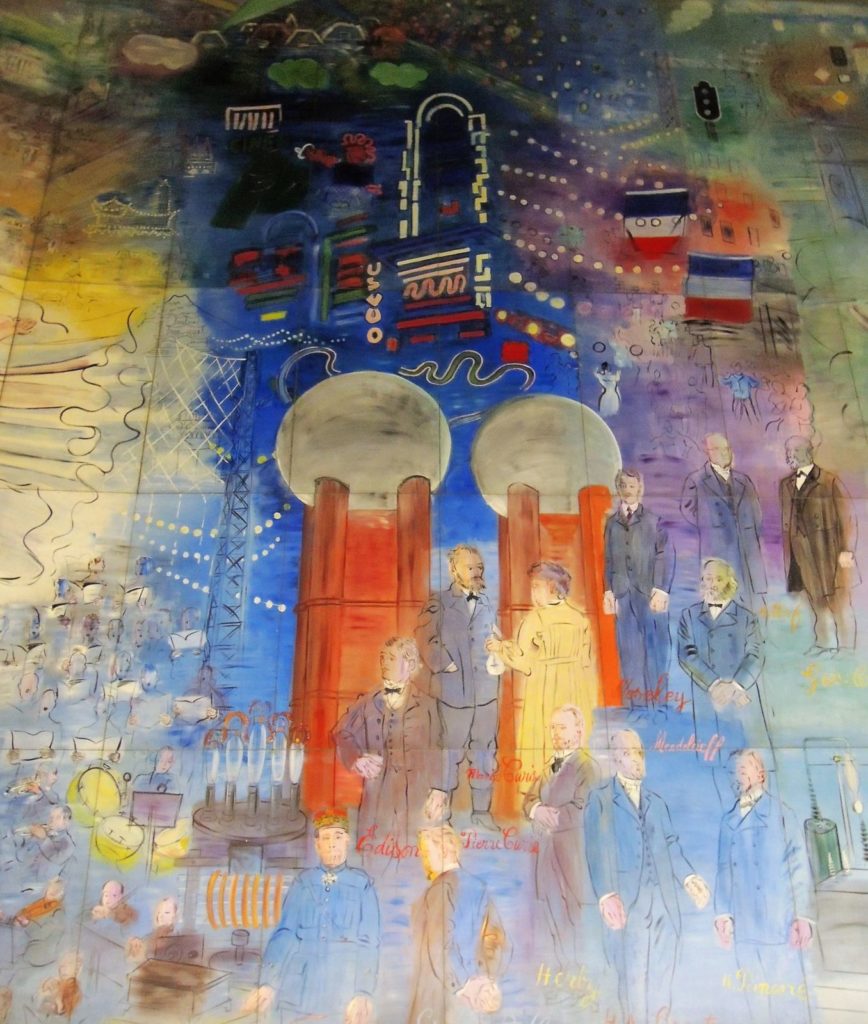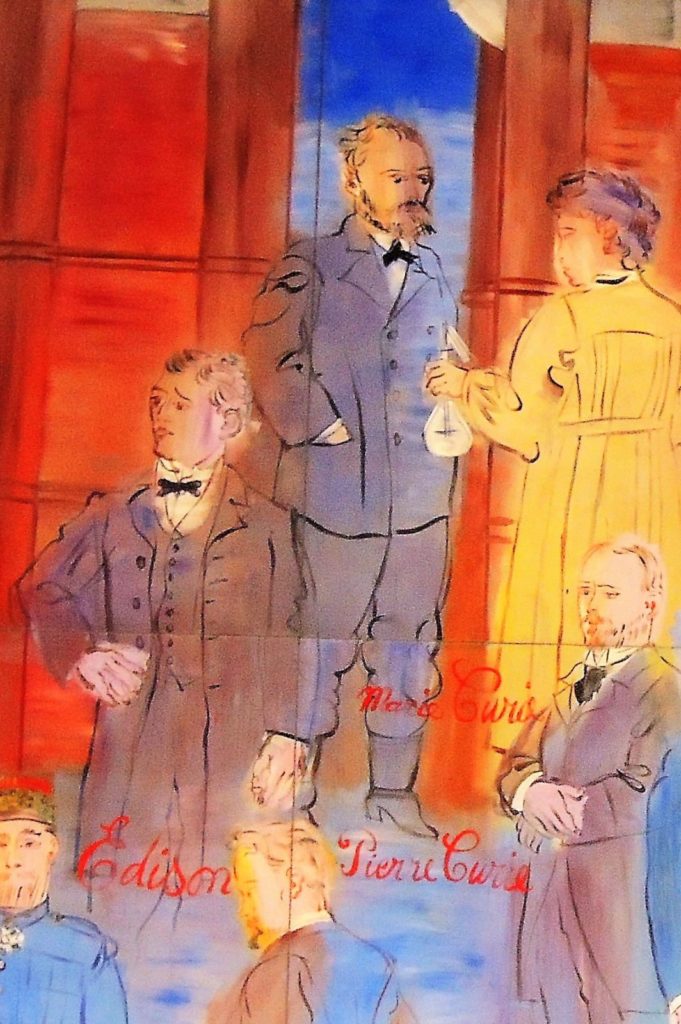New Jersey’s Thomas Edison (1847-1931) is one of the 110 identified figures included the immense painting by Raoul Dufy, commissioned by the Paris Electric Company for the Pavilion of Light and Electricity at the 1937 Paris International Exposition. Painted in only ten months, the mural presents historic and contemporary persons who may have had some role in the development of electricity.
Archimedes is present along with Benjamin Franklin and Marie Curie (the only woman) among many others. Each portrait was completed individually and then, images projected using a magic lantern onto an enormous wall to be painted.
The artist took his inspiration from Lucretius’ De rerum natura (On the Nature of Things), which expounds the Epicurean view of the natural origins of the universe. Dufy sought to complete Lucretius’ poem by bringing it up to the present world, creating a temple of Electricity, the goddess of modern times.
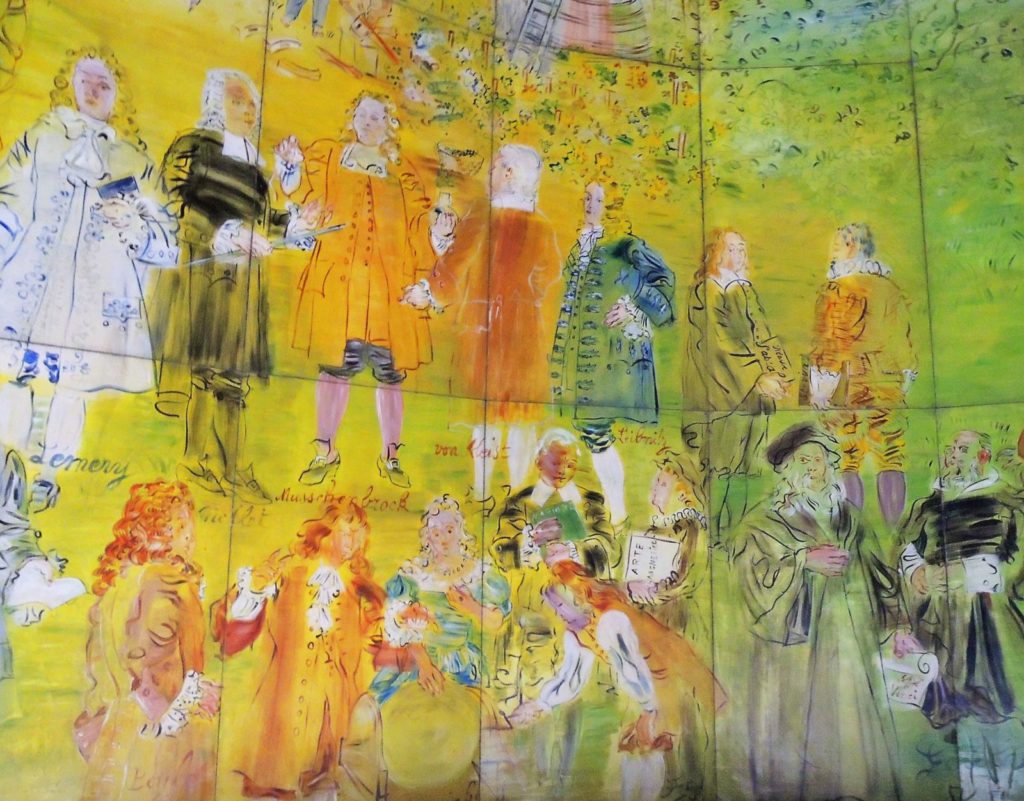 A huge power station takes a central position in the mural, with bolts of crackling electricity. The lower level features philosophers, scholars and engineers from antiquity to the present, while the upper register presents images of their discoveries—from mathematics to the light bulb—and its uses.
A huge power station takes a central position in the mural, with bolts of crackling electricity. The lower level features philosophers, scholars and engineers from antiquity to the present, while the upper register presents images of their discoveries—from mathematics to the light bulb—and its uses.
Originally shown on the concave wall of the Palais de la Lumière et de l’Electricité, built by Mallet Stevens on the Champs-de-Mars, the mural is now permanently installed at the Musée d’Art Moderne de la Ville de Paris, where it can be viewed for free.

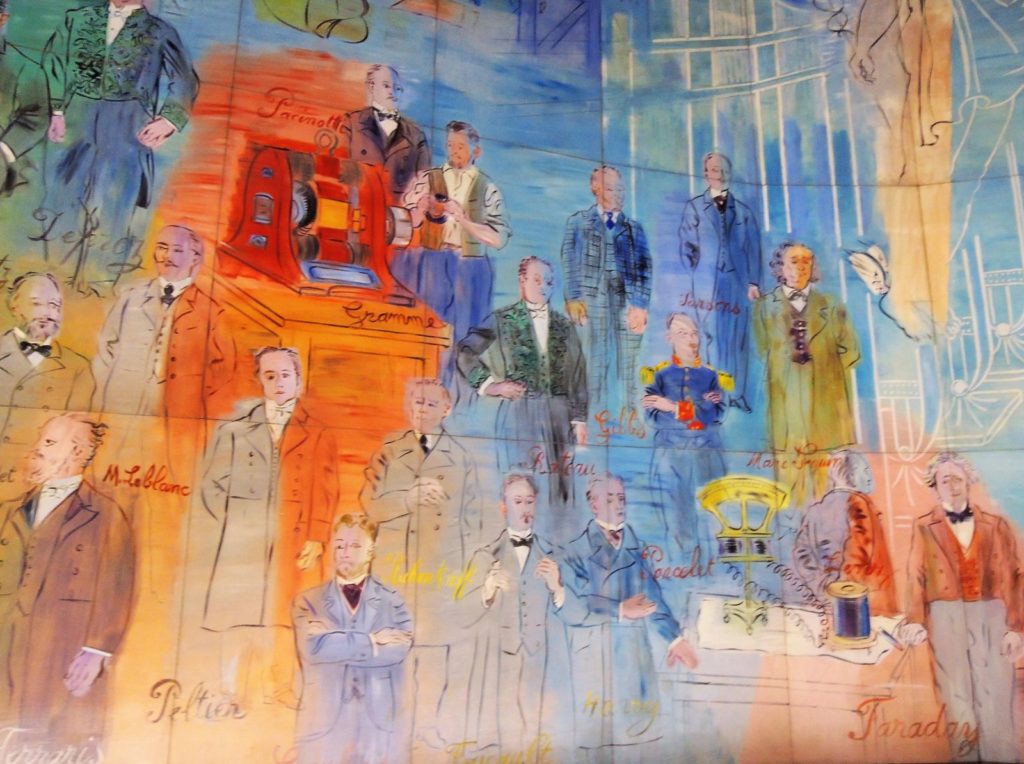 Raoul Dufy (1877-1953), La Fée Électricité (The Spirit of Electricity), 1937. Oil on plywood. 10 x 60 m. Paris, Musée d’Art Moderne de la Ville de Paris.
Raoul Dufy (1877-1953), La Fée Électricité (The Spirit of Electricity), 1937. Oil on plywood. 10 x 60 m. Paris, Musée d’Art Moderne de la Ville de Paris.
See also: Titus Lucretius Carus, T. Lucreti Cari, poetæ philosophici antiquissimi de rerum natura liber primus incipit fœliciter ([Verona: Paulus Fridenperger, 28 September 1486]). Rare Books EXKA Incunabula 1486 Lucretius

